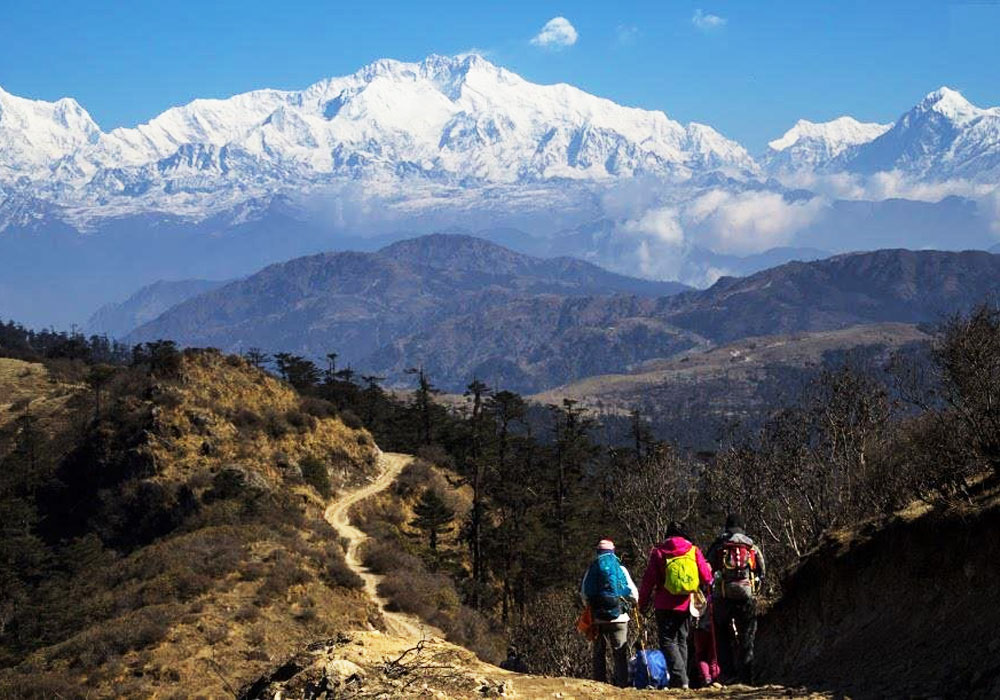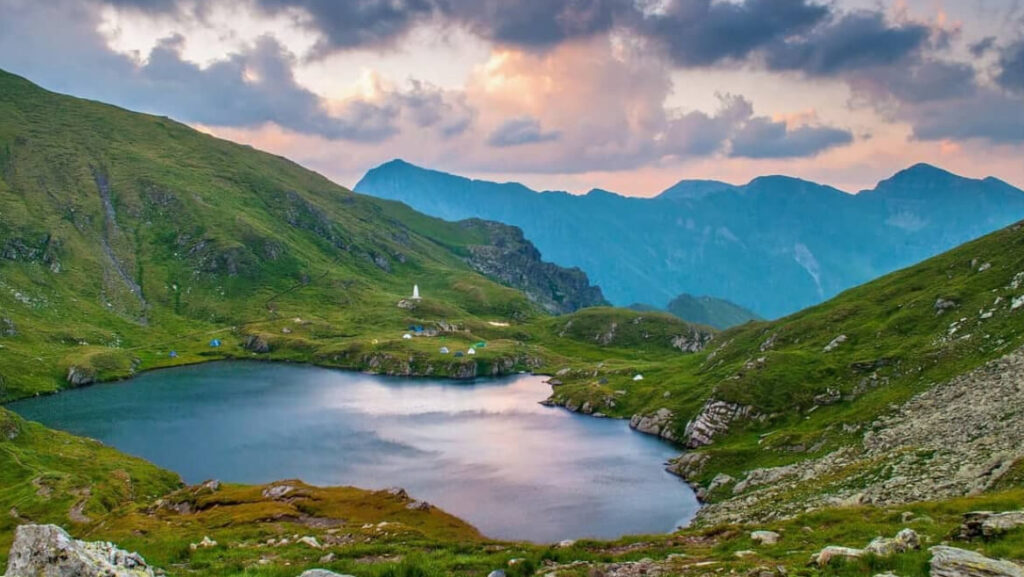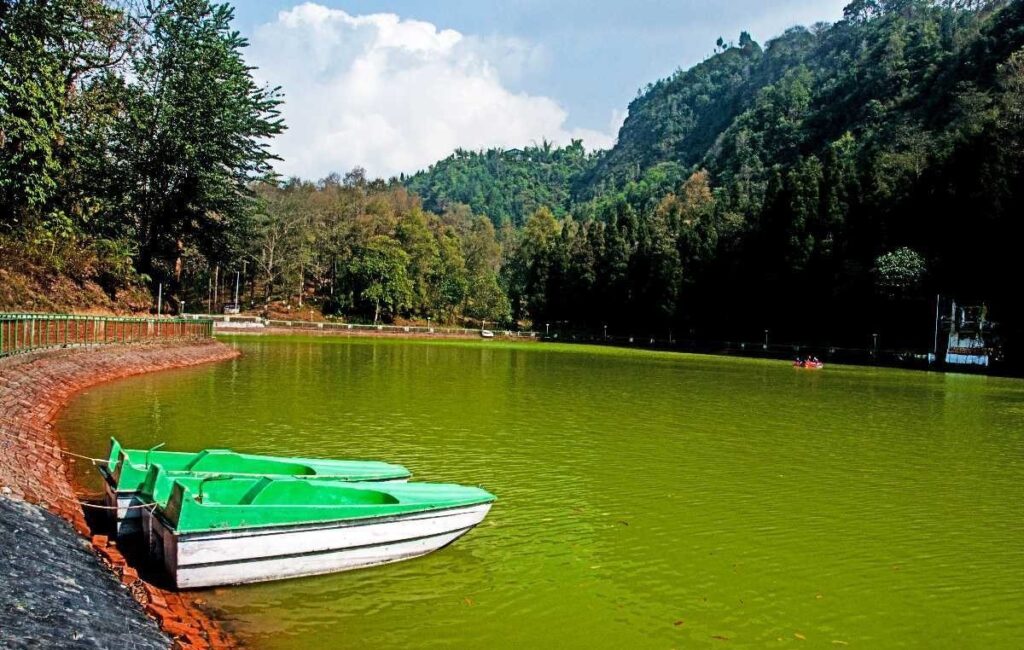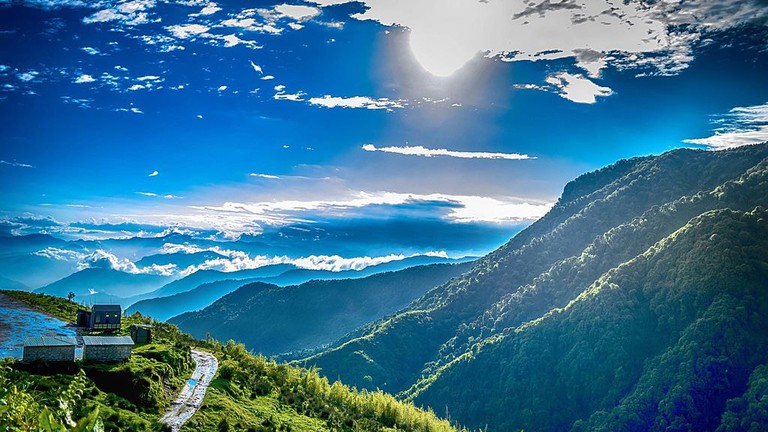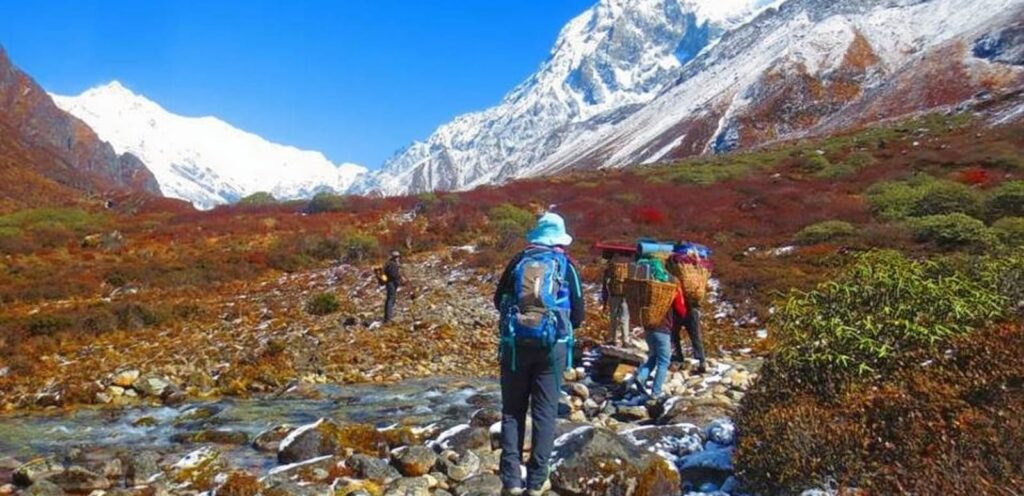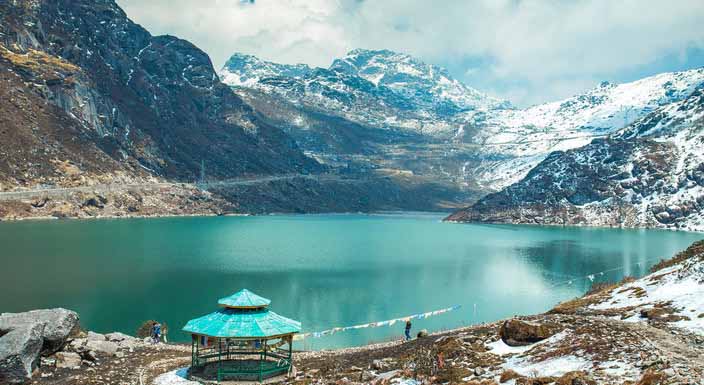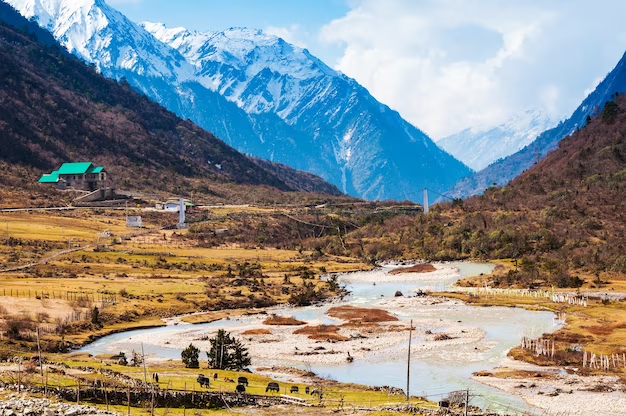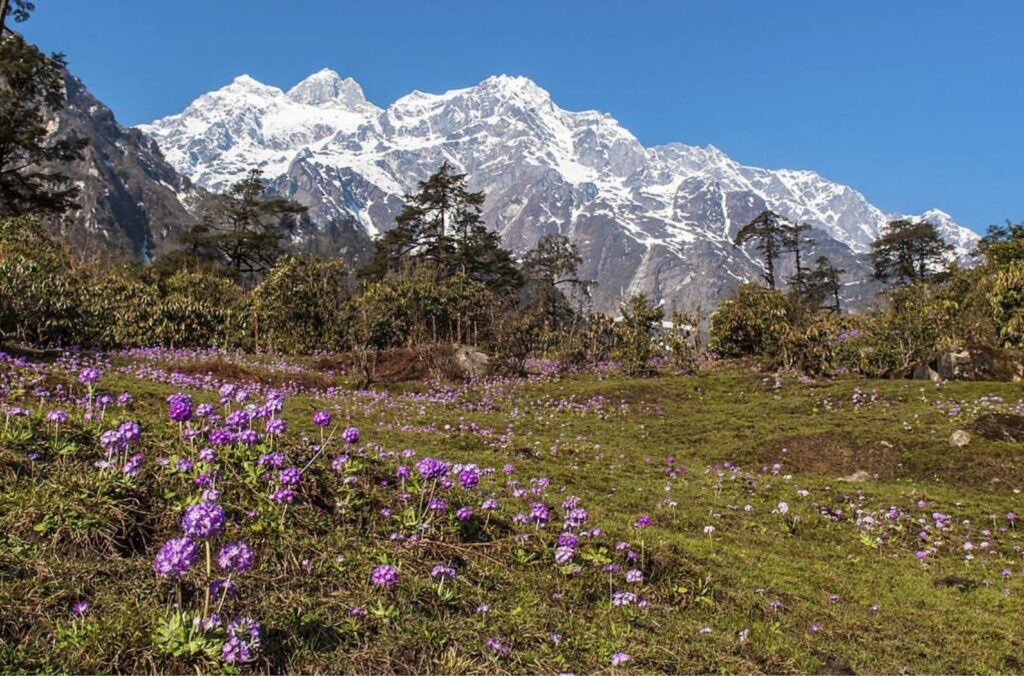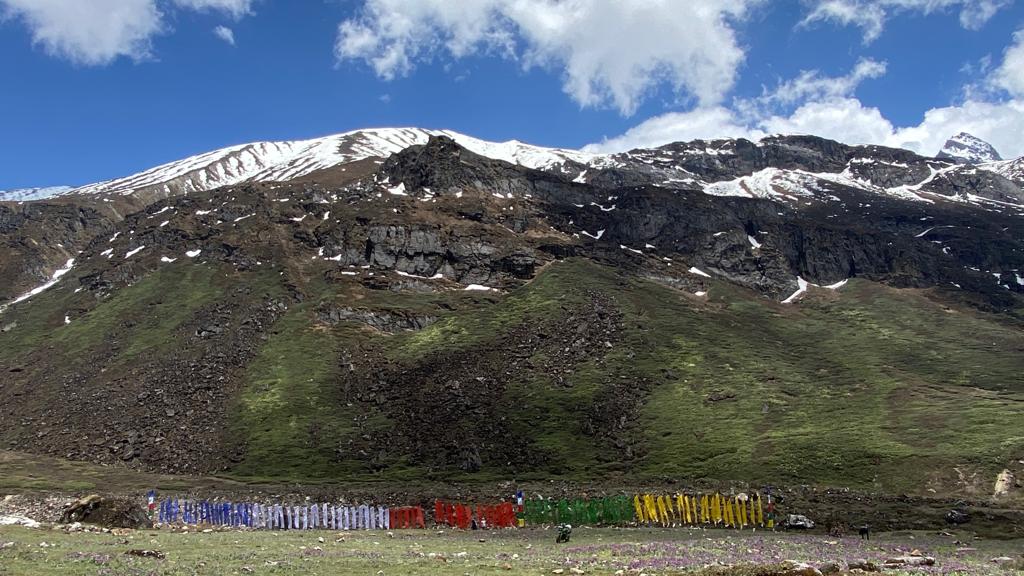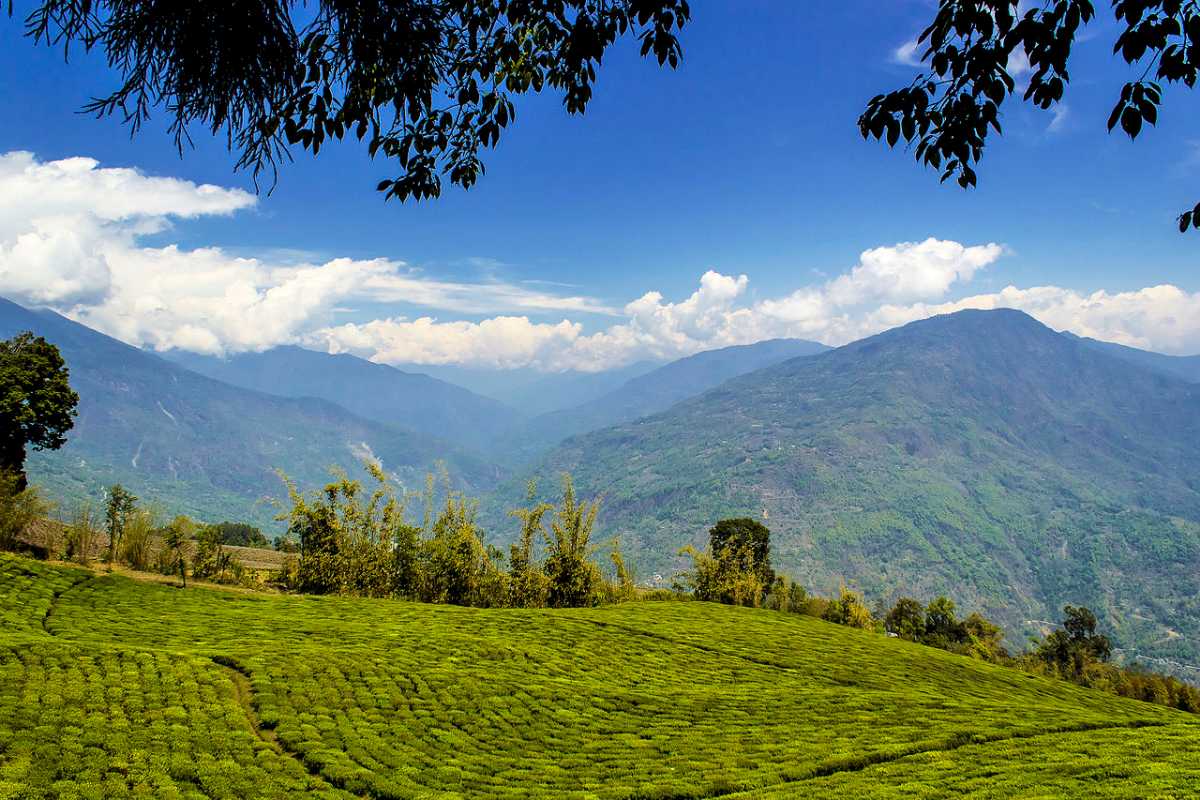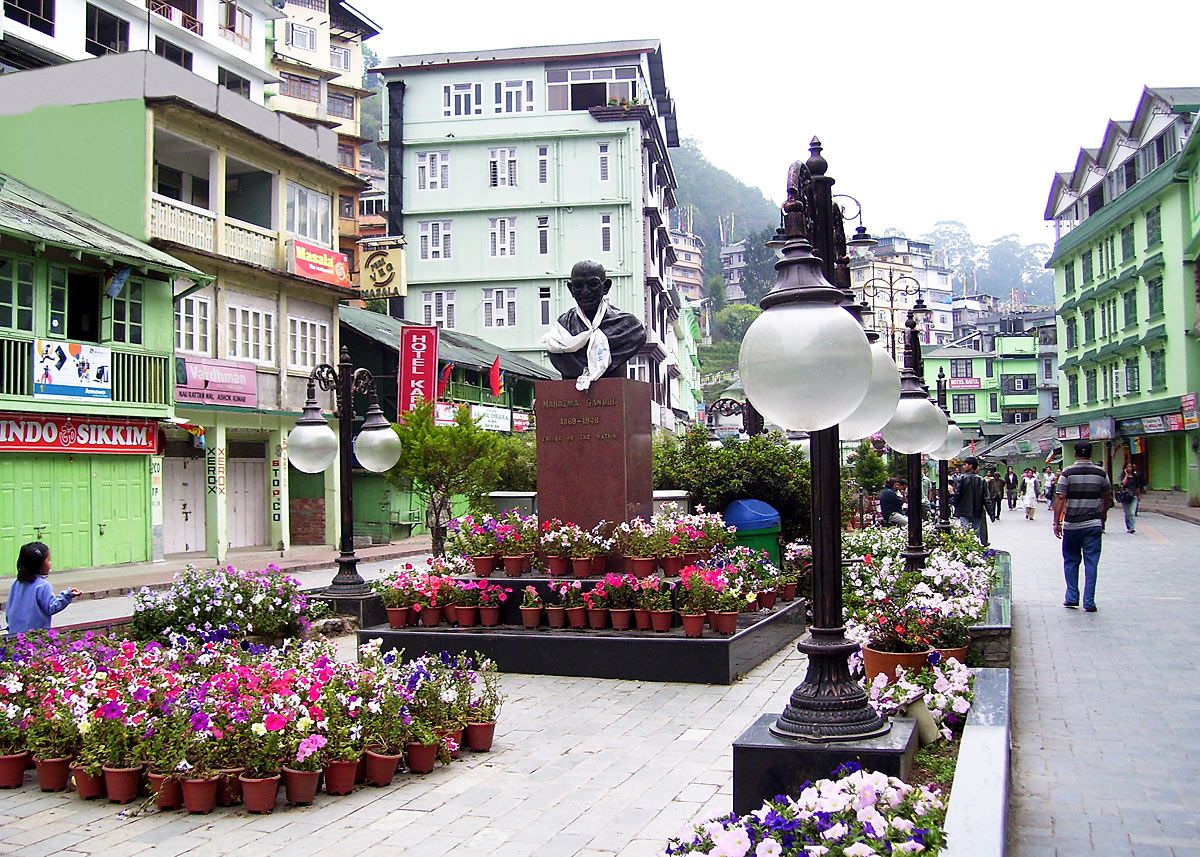”Trekking in Sikkim with Your Tours & Travels”
Trekking places in Sikkim offer adventurers an unparalleled journey through the majestic Himalayas with Your Tours & Travels. Explore the rugged trails of the Dzongri-Goecha La trek, where panoramic views of Mount Kanchenjunga await. Traverse the lush rhododendron forests on the Varsey Rhododendron Sanctuary trek, or discover the serene beauty of the Singalila Ridge trek. Each route presents unique challenges and breathtaking landscapes, from high-altitude lakes to pristine valleys. With expert guides from Your Tours & Travels, every trek becomes a memorable adventure, blending physical endurance with the awe-inspiring beauty of Sikkim’s natural wonders.
TREKKING PLACES IN SIKKIM
Trekking in Sikkim offers a gateway to some of the most breathtaking and diverse landscapes in the Himalayas. From the challenging trails of the Goecha La Trek, which offers stunning views of Mount Kanchenjunga, to the serene paths of the Dzongri Trek that wind through lush rhododendron forests, each trek presents a unique adventure. The Singalila Ridge Trek provides panoramic vistas of the world’s highest peaks, while the Barsey Rhododendron Trek immerses trekkers in a sea of vibrant blooms. Each step in these pristine environments brings a sense of tranquility and awe. With its varied terrain and captivating beauty, Sikkim is a trekker’s paradise, promising unforgettable experiences for all who explore its trails.
1. GREEN LAKE TREK -
The Green Lake Trek in Sikkim invites adventurers into a hidden realm of pristine beauty and solitude. This offbeat trek winds through dense forests, vibrant rhododendron fields, and high-altitude meadows, revealing the breathtaking Green Lake nestled at the base of Mount Kanchenjunga. Along the journey, trekkers encounter remote villages and the warm hospitality of the local communities.
As the trail ascends, panoramic views of towering Himalayan peaks emerge, creating a surreal backdrop for the serene lake. The Green Lake Trek is not just a journey through stunning landscapes but also a pilgrimage to one of Sikkim’s most secluded and awe-inspiring destinations, promising an unforgettable adventure for those who seek tranquility and natural splendor.
2. ARITAR TREK -
The Aritar Trek in Sikkim is a captivating journey through serene landscapes and rich cultural heritage. Starting from the quaint village of Aritar, the trek winds through lush forests, terraced fields, and picturesque hilltops. As you ascend, panoramic views of the surrounding mountains and valleys unfold, offering breathtaking vistas at every turn.
The trail passes through traditional villages, where warm hospitality and glimpses of local life enrich the experience. Each step reveals the unspoiled beauty of Sikkim, from tranquil lakes to vibrant rhododendron blooms. With its combination of natural splendor and cultural encounters, the Aritar Trek promises a truly unique and memorable adventure.
3. KASTURI TREK -
The Kasturi Trek in Sikkim is a hidden gem, offering an adventurous and less-traveled path through the heart of the Himalayas. This trek takes you through diverse landscapes, from dense forests to alpine meadows, each turn revealing a new facet of Sikkim’s natural beauty. As you ascend, panoramic views of majestic peaks like Kanchenjunga and Mt. Pandim unfold, providing a breathtaking backdrop to your journey.
The trail winds through quaint villages, where local culture and traditions add a rich, human element to the pristine wilderness. Nights spent under the star-studded sky at high-altitude campsites are unforgettable. The Kasturi Trek promises an immersive experience, blending challenging terrain with unparalleled scenic beauty, making it a must for any trekking enthusiast.
4. VARSEY TREK -
The Varsey Trek in Sikkim is a delightful journey through a kaleidoscope of colors and natural beauty. Starting from the quaint village of Hilley, trekkers are immediately greeted by a vibrant sea of rhododendrons, especially spectacular during the spring bloom. As the trail meanders through lush forests, the air is filled with the sweet fragrance of flowers and the melodies of chirping birds.
The highlight is the Varsey Rhododendron Sanctuary, where trekkers can immerse themselves in an enchanting floral wonderland. The trek also offers panoramic views of the majestic Kanchenjunga range, making every step a visual treat. The Varsey Trek is not just a trek but a celebration of nature’s splendor, offering a serene escape into Sikkim’s pristine wilderness.
Some more Popular Treks in SIKKIM
Maenam Hill Trek
Tendong Hill Trek
Goecha La Trek
Dzongri Trek
Singalila Ridge Trek
Rhododendron Trek
Trekking North Sikkim Tour Package
Questions related to Sikkim
- Which is cheaper Darjeeling or Gangtok?
- Accommodation: Both Darjeeling and Gangtok offer a range of accommodation options, from budget guesthouses to luxury hotels. The prices can vary significantly depending on the type of accommodation and its location within the city. Generally, Gangtok may have slightly lower accommodation costs compared to Darjeeling, but this can vary based on factors such as the time of year and specific accommodations.
- Food: Food prices can also vary, but in general, eating out at local restaurants and street food stalls is relatively affordable in both Darjeeling and Gangtok. However, dining at upscale or touristy restaurants can be more expensive.
- Transportation: The cost of transportation between Darjeeling and Gangtok can vary depending on the mode of transport you choose. Shared taxis and buses are common ways to travel between the two cities, and they are usually reasonably priced. However, if you opt for private transportation or hire a car, it will be more expensive.
- Sightseeing and Activities: The cost of sightseeing and activities will depend on your interests and the specific places you want to visit. Both cities offer various attractions, some of which may require entrance fees. Activities like trekking or guided tours will also have their own costs.
- Shopping: Darjeeling and Gangtok are known for their local handicrafts and souvenirs. Prices for these items can vary widely based on their quality and where you purchase them. Bargaining is common in local markets, so you may be able to get better deals with some negotiation skills.
- How to plan Sikkim Darjeeling tour?
- Set a Budget:
- Determine how much you're willing to spend on your trip. This will help you make choices regarding accommodations, transportation, and activities.
- Decide on the Duration:
- Decide how many days you want to spend in Sikkim and Darjeeling. A typical itinerary is around 7-10 days, but you can adjust based on your preferences.
- Research and Create an Itinerary:
- Research the places you want to visit in Sikkim and Darjeeling. Common attractions include Gangtok, Pelling, Tsomgo Lake, Nathula Pass, Darjeeling, and Tiger Hill.
- Create a rough itinerary, allocating days to each location and activity. Make sure to include travel time between destinations.
- Plan the Best Time to Visit:
- Consider the weather when planning your trip. The best time to visit is typically from March to June and from September to November when the weather is pleasant.
- Book Flights and Accommodations:
- Book your flights to Bagdogra Airport (IXB) or nearest airport, depending on your point of entry.
- Reserve accommodations in advance, especially during the peak tourist season. Choose hotels, guesthouses, or homestays that fit your budget and preferences.
- Arrange Transportation:
- Decide on how you will travel between destinations. Options include hiring a private cab, using public buses, or renting a car.
- Consider hiring a local guide for certain activities or treks to make the most of your experience.
- Obtain Necessary Permits:
- Check if you need permits for specific areas, such as Nathula Pass. These permits can be obtained through the local tourism department or your travel agency.
- Pack Accordingly:
- Pack clothing suitable for the weather during your visit. Layers are advisable due to temperature variations.
- Don't forget essential items like comfortable walking shoes, medications, and necessary documents.
- Plan Activities and Tours:
- Research and book activities and tours in advance, such as trekking, river rafting, or tea estate visits.
- Check for any cultural festivals or events happening during your visit that you might want to attend.
- Learn About Local Culture:
- Familiarize yourself with the local customs, traditions, and etiquette to show respect to the local people.
- Be Flexible:
- Be prepared for changes in plans due to unforeseen circumstances like weather conditions. Have a backup plan for such situations.
- Stay Informed About COVID-19 Guidelines:
- Keep track of any travel restrictions, health protocols, and safety guidelines related to COVID-19 that may apply during your visit.
- Travel Insurance:
- Consider purchasing travel insurance to cover unexpected emergencies or trip cancellations.
- Enjoy Your Trip:
- Finally, relax, enjoy the breathtaking scenery, and immerse yourself in the culture and beauty of Sikkim and Darjeeling.
- Set a Budget:
- Sikkim and Gangtok same?Sikkim and Gangtok are not the same, but they are closely related. Sikkim is a state in northeastern India, while Gangtok is the capital and largest town of Sikkim. Here's a bit more detail about each:
- Sikkim:
- Sikkim is a state located in the northeastern part of India, nestled in the eastern Himalayas.
- It is known for its stunning natural beauty, including lush green valleys, snow-capped peaks, pristine lakes, and dense forests.
- Sikkim is one of the smallest states in India by land area but is rich in biodiversity and cultural diversity.
- The state offers a wide range of attractions and activities, including trekking, mountaineering, wildlife viewing, and visits to monasteries and historical sites.
- Sikkim shares its borders with Tibet (China) to the north, Bhutan to the east, Nepal to the west, and the Indian state of West Bengal to the south.
- Gangtok:
- Gangtok is the capital and largest town in Sikkim.
- It serves as the political, cultural, and economic center of the state.
- Gangtok is situated in the eastern part of Sikkim and is known for its scenic beauty and pleasant climate.
- The town is surrounded by the Himalayan ranges and offers breathtaking views of the mountains.
- Gangtok is a popular tourist destination and serves as a gateway for travelers exploring various parts of Sikkim.
- It has a mix of modern amenities and traditional charm, with attractions like monasteries, markets, and viewpoints.
- Sikkim:
- How many days required to visit Gangtok?The number of days required to visit Gangtok can vary depending on your interests, the specific places you want to explore in and around Gangtok, and your travel pace. However, a typical itinerary for Gangtok usually ranges from 2 to 4 days. Here's a general guideline for how you can plan your time in Gangtok:
- 2 Days in Gangtok:
- If you have limited time, you can spend a quick two days in Gangtok to see some of its major attractions. This would involve a somewhat rushed schedule but can give you a taste of the town.
- Day 1: Explore the city center, visit attractions like MG Marg (the main market), Enchey Monastery, and Hanuman Tok.
- Day 2: Take a day trip to the nearby attractions, such as Rumtek Monastery, Banjhakri Falls, and the Namgyal Institute of Tibetology.
- 3 Days in Gangtok:
- Spending three days in Gangtok allows for a more relaxed experience, and you can explore additional places.
- Day 1 and Day 2: Follow the itinerary for a 2-day trip, as mentioned above.
- Day 3: Visit the Tsomgo Lake and Baba Mandir (if they are open to tourists; permits are required), or you can explore more of Gangtok's local culture and cuisine.
- 4 Days or More:
- With four or more days in Gangtok, you can explore the town at a leisurely pace and also consider nearby destinations like Nathula Pass and Changu Lake.
- Day 1 and Day 2: Follow the itinerary for a 2-day trip in Gangtok.
- Day 3: Visit Tsomgo Lake and Baba Mandir (if you haven't already) or explore nearby areas like Tashi Viewpoint, Ganesh Tok, or the Flower Exhibition Centre.
- Day 4: Take a day trip to Nathula Pass (if it's open to tourists during your visit; permits are required), which is a high-altitude border pass with China. You can also visit Changu Lake on the way.
- 2 Days in Gangtok:
- What is the best time to visit Sikkim?The best time to visit Sikkim depends on your preferences and the experiences you seek. Sikkim offers different attractions and experiences throughout the year due to its diverse geography and varying climates. Here are the main seasons and their characteristics:
- Spring (March to May):
- Spring is one of the most popular times to visit Sikkim. The weather is pleasant, and the region's flora comes alive with blooming rhododendrons, orchids, and other flowers.
- This is an ideal time for trekking and outdoor activities. Many trekking routes are accessible, and you can enjoy clear views of the Himalayan peaks.
- Temperatures during spring are comfortable, with daytime temperatures ranging from 15°C to 25°C (59°F to 77°F).
- Summer (June to August):
- Summer in Sikkim is the monsoon season, characterized by heavy rainfall. The region is lush and green during this time, but it can be challenging for outdoor activities due to rain and landslides.
- While some tourists avoid this season, it's a great time for those interested in observing the vibrant landscapes and experiencing the local culture.
- Be prepared for occasional road closures and disruptions in transportation during heavy rains.
- Autumn (September to November):
- Autumn is another excellent time to visit Sikkim. The monsoon rains have subsided, leaving behind clear skies and lush landscapes.
- The weather is cool and comfortable, making it perfect for sightseeing, trekking, and other outdoor activities.
- Autumn is also the harvest season, and you can witness local festivals and cultural events.
- Clear views of the Himalayan peaks can be enjoyed during this season.
- Winter (December to February):
- Winter in Sikkim is cold, with temperatures dropping significantly, especially at higher altitudes. In Gangtok, daytime temperatures may range from 5°C to 15°C (41°F to 59°F).
- This is a great time for travelers who enjoy the charm of snowy landscapes and fewer crowds.
- Many high-altitude areas may be covered in snow, making it ideal for winter sports like skiing in areas like Yumthang Valley.
- Some high-altitude passes like Nathula Pass may be closed due to heavy snowfall.
- Spring (March to May):
- Which is colder Sikkim or Darjeeling?Sikkim, as a state, encompasses various elevations and climates, so the temperature can vary depending on the specific location and time of year. In general, Sikkim has a wide range of temperatures, from subtropical in the lower regions to alpine in the higher areas. Darjeeling, on the other hand, is known for its cooler climate due to its higher elevation. It's a hill station located at an altitude of around 6,700 feet (2,042 meters) above sea level, and its climate is considered more temperate compared to many parts of Sikkim. In terms of general temperature comparisons:
- Darjeeling: Darjeeling tends to be cooler than the lower-altitude areas of Sikkim. Summers in Darjeeling are mild, with daytime temperatures ranging from 15°C to 20°C (59°F to 68°F). Winters are colder, with temperatures dropping to around 2°C to 7°C (36°F to 45°F). It can occasionally experience snowfall during the winter months.
- Sikkim: The temperatures in Sikkim can vary widely based on the elevation. In places like Gangtok (the capital of Sikkim) at a lower elevation, the temperatures are milder and more moderate, similar to Darjeeling. However, in higher-altitude areas of Sikkim, such as Lachung, Lachen, or areas around Nathula Pass, temperatures can be significantly colder, especially during the winter months, often dropping below freezing.
- Does Gangtok have snow?Yes, Gangtok, the capital and largest town of Sikkim, does receive snowfall, but it typically occurs during the winter months. Gangtok is situated at an elevation of approximately 5,410 feet (1,650 meters) above sea level, which means that while it does experience cold weather in the winter, it doesn't receive heavy or prolonged snowfall like higher-altitude areas in Sikkim. Here's what you can expect regarding snowfall in Gangtok:
- Winter Snowfall: Gangtok may experience occasional light snowfall during the winter months, particularly in December, January, and February. However, the snowfall in Gangtok is usually not heavy, and it may not accumulate significantly on the ground.
- Snow-Covered Surroundings: While Gangtok itself may not be covered in deep snow, the surrounding areas at higher elevations, such as Tsomgo Lake (Changu Lake), Nathula Pass, and higher mountain regions, often receive more substantial snowfall and can provide a snowy landscape during the winter.
- Road Closures: When there is snowfall, especially in the higher regions of Sikkim, it can lead to temporary road closures, including the Nathula Pass route, due to safety concerns. It's important to check road conditions and any travel advisories if you plan to visit these areas during the winter.
- Can we cover Sikkim in 4 days?Covering the entire state of Sikkim in just 4 days would be quite challenging and rushed, given the diverse attractions and landscapes it offers. Sikkim is known for its stunning natural beauty, cultural heritage, and various places of interest, so it's best explored at a more leisurely pace to fully appreciate what it has to offer. However, if you have only 4 days and want to see some of the highlights, here's a very basic itinerary you could consider: Day 1: Arrival in Gangtok
- Arrive at Bagdogra Airport or New Jalpaiguri Railway Station and proceed to Gangtok.
- Explore Gangtok's city center, including MG Marg and local markets.
- Visit attractions in and around Gangtok, such as Enchey Monastery, Hanuman Tok, and Tashi Viewpoint.
- Explore local culture and cuisine.
- Take a day trip to Tsomgo Lake (Changu Lake) and Baba Harbhajan Singh Mandir.
- Enjoy the scenic beauty of the lake and surrounding areas.
- Depending on your departure time, you can either explore more of Gangtok or head back to the airport or railway station for your onward journey.
Table of Contents
Toggle

